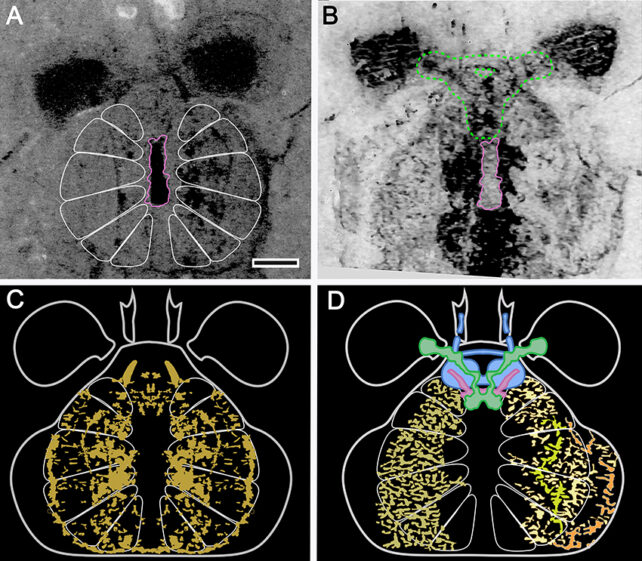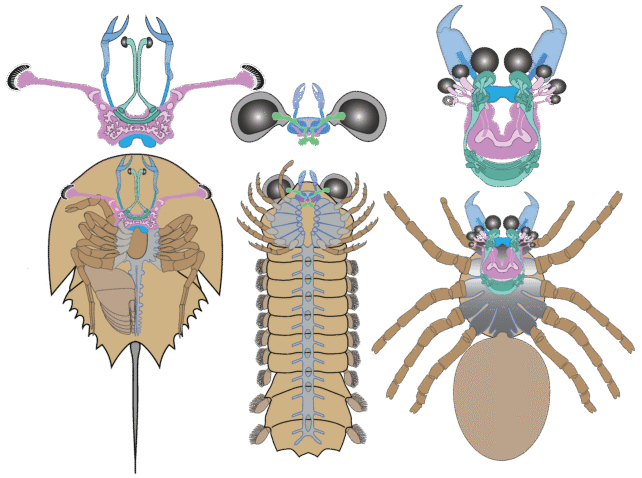In a fascinating study published in Current Biology, researchers have turned our understanding of arachnid evolution on its head. For years, scientists assumed that spiders, scorpions, and their kin evolved from land-dwelling ancestors. However, a fresh analysis of a 500-million-year-old fossil suggests that these creatures might have actually come from the oceans.
Meet Mollisonia Symmetrica
The star of this groundbreaking study is a fossil called Mollisonia symmetrica, a mid-Cambrian arthropod that lived over 500 million years ago. Previously thought to be an ancestor of horseshoe crabs, this fossil’s neural structure has caught the attention of neuroscientists.
Researchers from the University of Arizona and King’s College London used advanced microscopy to study its brain, revealing a striking similarity to the brain of modern arachnids. This wasn’t just any fossil find; the neural layout in Mollisonia matched that of today’s spiders and scorpions in a way that suggests marine origins rather than a land-based evolution.


Uncovering the Hidden Link
You might be wondering, why does a fossil brain matter so much? Well, the organization of an animal’s nervous system provides crucial clues about its evolutionary lineage. In the case of Mollisonia, its nervous system showed a unique pattern of neural centers that are characteristic of marine arthropods, such as sea spiders and horseshoe crabs. The scientists’ analysis suggests that arachnids might have originated from an oceanic ancestor and later adapted to life on land.
In essence, this discovery is pushing the idea that arachnids didn’t just evolve from any land arthropod—they could have evolved from marine creatures, which means that spiders and scorpions may share a much deeper connection with the oceans than previously imagined.


How Did They Make the Jump from Sea to Land?
With this new theory on the table, the next natural question is: how did these ancient marine arthropods make the leap to land? The answer might lie in the way their neural systems adapted over time.
The unique organization of the brain in Mollisonia—which includes neural pathways that control movement—could have given early arachnids a significant advantage. These “neural shortcuts” likely helped them master complex movements, such as walking or weaving webs, which would be essential for survival on land.
What’s Next for Arachnid Evolution?
While the research on Mollisonia is still in its early stages, it opens the door to a whole new way of thinking about arachnid evolution. If this theory proves correct, it could rewrite our understanding of how some of Earth’s most successful predators evolved. It also raises interesting questions about other animals with marine origins that transitioned to land.
Source link

